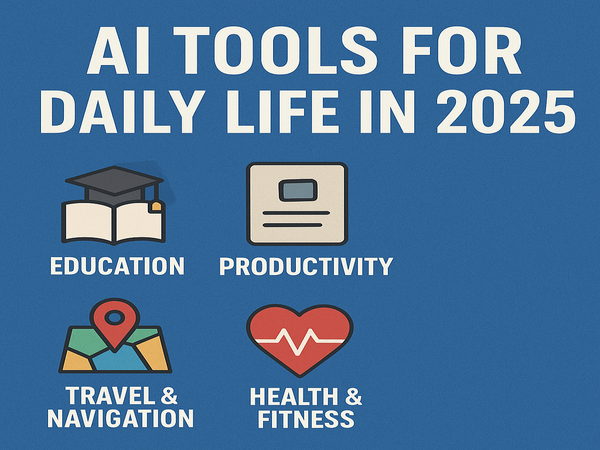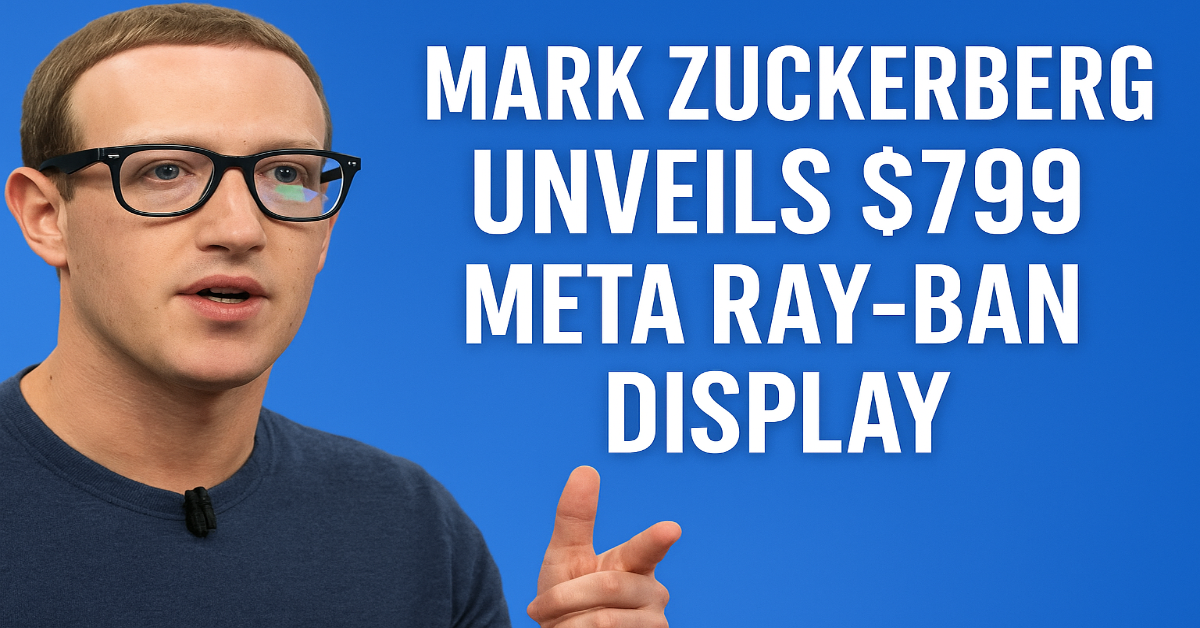Artificial Intelligence (AI) is no longer a futuristic concept; it is part of our everyday lives. From smartphones and smart speakers to cars and workplaces, AI has become a tool that makes life easier, faster, and smarter. In the USA and Europe, AI adoption is growing rapidly, and many people are already using AI tools without even realizing it. In this article, we will explore the most popular and useful AI tools for daily life in 2025, and how they improve productivity, health, communication, and entertainment.

1. AI Personal Assistants
AI-powered personal assistants like Google Assistant, Apple Siri, Amazon Alexa, and Microsoft Copilot have transformed the way people interact with technology. They can:
- Set reminders, alarms, and appointments
- Answer questions instantly
- Control smart home devices (lights, security, heating)
- Send messages and make calls hands-free
- Translate languages in real-time
In all over the world, AI assistants are becoming household essentials. They save time and simplify multitasking.
2. AI in Communication
Communication has become faster and smarter thanks to AI. Tools like Grammarly, DeepL Translator, and ChatGPT are widely used to improve language, grammar, and clarity.
- Grammarly helps in writing emails, essays, and reports with better grammar and style.
- DeepL Translator provides highly accurate translations, widely used in Europe where multiple languages are spoken.
- ChatGPT, perplexity , Google gemini and similar AI chatbots assist in drafting messages, generating ideas, and even holding conversations.
This makes personal and professional communication smoother and more effective.
3. AI for Productivity & Work
AI productivity tools are changing workplaces in the USA and Europe. Some top tools include:
- Notion AI: Organizes projects, tasks, and notes.
- Jasper AI: Creates blog posts, ads, and marketing content.
- Otter.ai: Transcribes meetings and lectures instantly.
- Microsoft Copilot: Integrated into Office apps to help with writing, summarizing, and analyzing data.
- Grammarly – AI writing & communication
These tools save hours of work and increase efficiency, especially for remote workers and businesses.
4. AI in Health & Fitness
AI is playing a big role in health and wellness. people are using apps like:
- MyFitnessPal & Lifesum: Track diet and calories with AI recommendations.
- Fitbit & Apple Watch AI features: Monitor heart rate, sleep, and activity.
- AI-based telemedicine: Apps that suggest possible diagnoses and connect users with doctors.
- Woebot – AI mental health chatbot
- Ada Health – Symptom checker with AI insights
For example, AI can remind users to drink water, suggest healthier meals, or recommend workout plans personalized to their lifestyle.
5. AI in Education & Learning
Students and professionals use AI tools daily for learning and skill-building:
- Duolingo with AI: Makes language learning fun and adaptive.
- Khan Academy’s AI Tutor: Provides personalized learning paths.
- ChatGPT / AI tutors: Help answer questions, explain concepts, and prepare for exams.
- QuillBot – AI paraphrasing & grammar checker
- Quizlet AI – Smart flashcards & practice tests
In Europe, where multiple languages are spoken, AI translation and tutoring tools are especially valuable
6. AI in Travel & Navigation
AI tools make traveling easier and safer:
- Google map: AI suggests the fastest routes and predicts traffic.
- Booking.com & Airbnb AI recommendations: Suggest best hotels and rentals.
- Flight price prediction tools (Hopper, Skyscanner AI): Help find the cheapest flights.
- Skyscanner AI – Best travel deals with AI
- Waze AI – Smart navigation & route optimization
- Hopper AI – Flight & hotel price prediction
For the travelers all over the world , these tools save money and make journeys stress-free.
Also read :- Apple iphone 17 air price and features
7. AI in Entertainment
AI is also transforming how people watch, listen, and play:
- Netflix & Spotify AI algorithms: Suggest personalized shows, music, and movies.
- AI art & music generators: Tools like MidJourney and Soundraw allow people to create unique content.
- Gaming with AI: Video games now use smarter AI opponents and immersive experiences.
- NVIDIA DLSS – AI graphics upscaling for gaming
Entertainment has become more engaging because of AI personalization.
8. AI in Smart Homes
Smart homes are becoming popular in both the USA and Europe. AI tools help with:
- Energy saving: Smart thermostats (Nest, Hive) adjust heating and cooling.
- Security: AI-powered cameras detect unusual movements.
- Comfort: Voice-controlled lighting and appliances.
- Google Nest – Smart thermostat & home automation
- Amazon Alexa – Voice-controlled home assistant
- Philips Hue AI – Smart lighting with AI control
- Ring AI Cameras – AI-powered security detection
- Hive AI – Energy-saving home system (popular in Europe)
These features save costs and make homes safer and more comfortable.
9. AI in Shopping & Finance
AI tools also make shopping and money management easier:
- Amazon AI recommendations: Suggest products based on your needs.
- AI-powered budgeting apps (Mint, YNAB, Revolut): Track spending and suggest savings.
- Virtual try-on AI tools: Try clothes, glasses, or makeup virtually before buying.
This trend is rapidly growing in e-commerce across the globe.
10. Future of AI in Daily Life
Looking ahead, AI will continue to integrate into more areas of life:
- Self-driving cars will become mainstream.
- AI doctors and health monitoring will improve healthcare
- Education will become highly personalized.
- Workplaces will rely on AI for decision-making and automation.
Conclusion
AI is no longer just a buzzword—it is a practical part of everyday life in the USA and Europe. From health apps and personal assistants to work tools and entertainment, AI makes tasks easier, faster, and smarter. As technology keeps advancing, we can expect AI to become even more deeply integrated into our routines. Embracing AI tools today means preparing for a smarter tomorrow.




